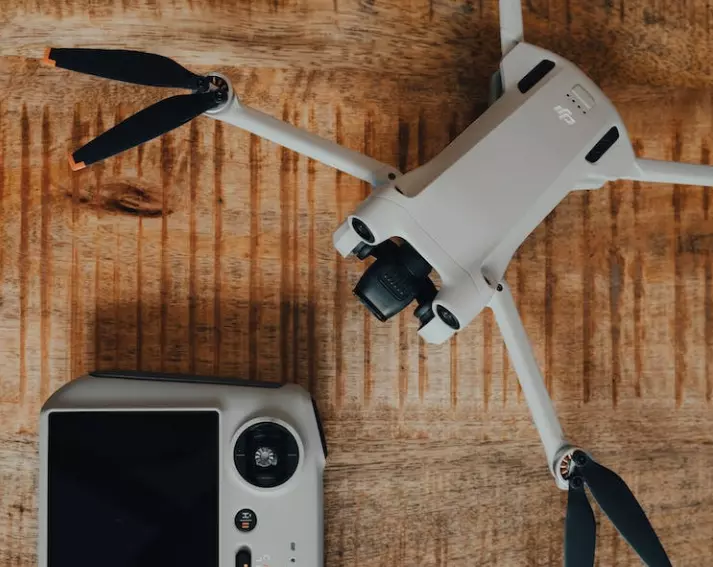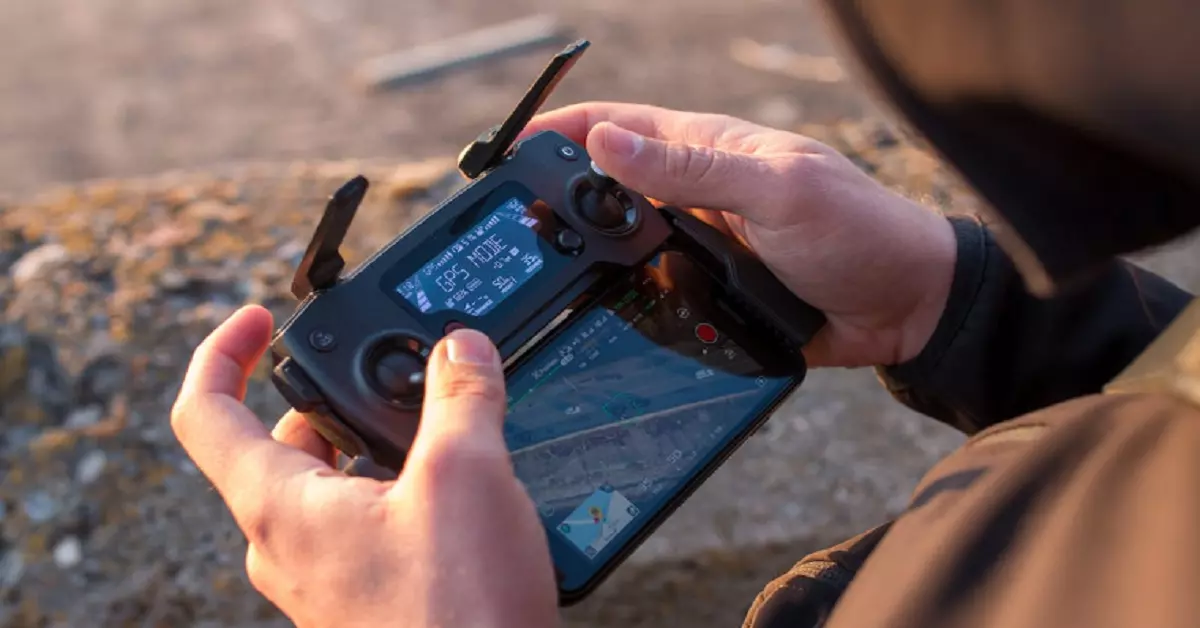Launching a quadcopter is not too difficult, and it is quite possible to master it in a short period of time if you put in some effort. To begin with, you need to learn the features of the control system, which buttons are responsible for what, where the nose of the drone is, and how to position it correctly at the start.
Types of quadcopter control
The type of control depends on the model. The following options are actively used today:
- Smartphones/ tablets. You need to download a proprietary application to provide a Wi-Fi connection; you will see the video from the drone camera and all the necessary functions on the screen. The only thing that can be irritating is the range limitations caused by the module’s signal.
- Remote control. It can be used to send the device at distances of up to several miles, and the controller is convenient for shooting and monitoring distant objects. The remote control is also equipped with different functions, depending on the modification, but the list of basic commands remains the same for different manufacturers. Lifting, lowering, rotating, and tilting can be achieved with the help of special sticks.
Quadcopter remote control
A quadcopter controller is a device for changing the drone’s orientation in the air. There are different models of controllers, but all of them have common design features.
All controllers are equipped with two sticks – control levers. The left stick is usually responsible for moving the quadcopter up and down, as well as for the yaw. The right stick controls rolling and pitching. It’s worth understanding more about these aviation terms, by the way.
- Yaw is the rotation around the vertical axis of the drone – the nose (front part) turns in different directions.
- Roll is the rotation or tilt of the quadcopter around its front-to-back axis, as if it is falling on its side.
- Pitch is a tilt relative to the side-to-side axis of the drone (or any flying object, basically). If the nose of the drone is dipping – it’s called nose-diving or pitching down; if its nose is going up – it’s a pitch up.
A little more has to be said about the sticks themselves. There are two of them, naturally.
The left one has four positions:
- Stick up (aka throttle) – the drone rises.
- Stick down (brake) – the drone goes down.
- Stick right (yaw right) – the copter turns on the spot to the right.
- Stick left (yaw left) – the drone turns on the spot to the left side.
The right stick also has 4 positions:
- Stick down (pitch down) – the drone’s nose tilts.
- Stick up (pitch up) – the drone’s nose is cocked upwards.
- Stick left (roll left) – the copter tilts to the left side.
- Stick right (roll to the right) – the drone tilts to the right side.

How to use the drone remote control: tips for beginners
Move the controller sticks smoothly, without jerking. For greater convenience and accuracy of movements, hold the levers with your thumb and index finger.
Be aware of inertial movement. Very often the drone continues to move for some time despite the fact that the operator has returned the stick to the neutral position. This is a consequence of inertia. Learn to plan your braking and turns in advance to make them as smooth as possible.
To fly a drone, you need to think like a drone. Don’t forget that it will fly where its nose (the front part) is looking, not where the person controlling it is looking. In other words: always watch its nose!
Flight modes
Drones can have several flight modes. The most popular are:
Acro mode is for experienced pilots. The drone’s stabilization is disabled and the speed is not limited.
Self-level mode is an option for beginners. Stabilization sensors are active, speed is limited.
Attitude Holding Mode means that the model shall be kept in the air even if the operator releases the levers.
GPS Attitude Holding Mode differs somewhat from the previous one. The altitude here is held by the activated module, the pilot only binds the drone to certain coordinates. There is no need to monitor the altitude. This mode is considered the most convenient for aerial photography.
Conclusion
Today, buying a quadcopter is not a problem. Manufacturers produce mini-drones, amateur and professional models. Many beginners are eager to buy quadcopters, hoping to quickly master the control technique. But in reality, everything is not as easy as it seems when you watch the actions of an experienced operator. That’s why it’s important to read the manual carefully, as models may differ in control combinations.
Still, despite all difficulties and temporary shortcomings of this technology, drones allow you to do a lot of useful things. That’s why now is a great time to get a drone and learn how to fly it. And when you have a drone, it’s important to keep it in perfect condition – to ensure it’s useful to you and harmless to other people. If your drone malfunctions, contact an expert drone repair service. In some areas the skillful technicians are more easily found than in others, but it’s always worth it to entrust repairs of such gadgets to professionals.
Read More: Moral Story
